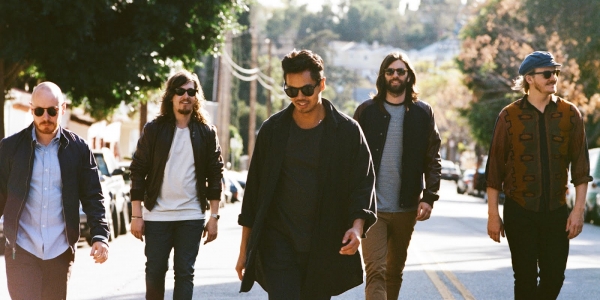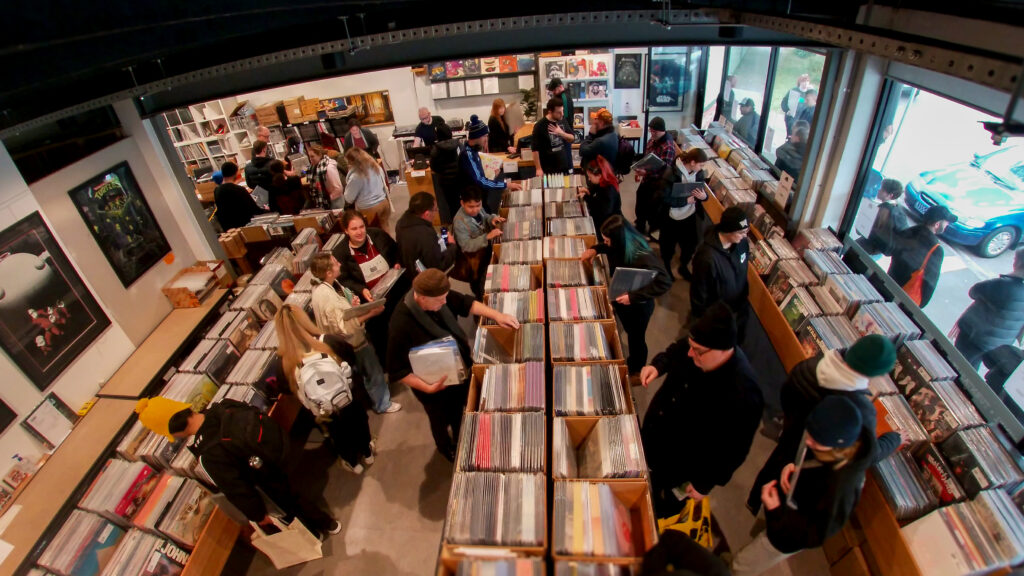Lindy Morrison, the group’s drummer in their first incarnation and one of the longest serving members, was one of the four Go-Betweens – along with Forster, multi-instrumentalist Amanda Brown and bassist Robert Vickers – charged with the task of selecting tracks for this new release. “The four remaining members were on email all the time, and it was really hard,” she says. “Everybody disagreed about tracks. I really wanted Twin Layers Of Lightning on it. I love that track, but there just wasn’t room. There’s too many good tracks. Emails would be going, ‘Four people want this track’, ‘Three people want this one’ – it was like that. It was hard but it was fun.”
Morrison says that working towards a common goal with her former bandmates gave them an opportunity to rekindle some of the collective drive of their halcyon days, as well as reacquaint them with each other’s personalities. “During the ‘80s, they were the most wonderful, creative times. We were so young and so brave. I guess in some ways we could lead such irresponsible lives because we had no commitments or family. We just had one goal and that was to play music, to play The Go-Betweens’ music. It was the maelstrom of band life. Now we’re all settled and mature and responsible, but everybody’s exactly the same. The same quirks and flaws and qualities of people all showed up in the emails. Nothing had really changed in the dynamic of the relationships.”
With the surviving members of what many consider to be the “classic” lineup of The Go-Betweens working on a project together, one of the inevitable notions is of them playing again, even in McLennan’s absence. Morrison tells me that while the band was compiling The Best Of…, the possibility of shows did come up. “We discussed it, but Robert [Forster] feels that he has worked with bands for the last 30 years and he wants time to work solo, and I completely understand that. I have no problem with that at all,” she says. “Why would he open that door again? It’s a big door to open. And I’m sorry, but then again I go, ‘Am I sorry?’ People’s memories of me as The Go-Betweens’ drummer will always be when I was young and lovely,” she laughs, “so it’s an either/or for me.”
While stadium-sized success never came their way, the influence of The Go-Betweens’ music continues to be heard in generations of indie guitar bands that have followed, both in Australia and abroad. Morrison puts the band’s ongoing legacy down to their individualism. “Despite the best wishes of the producers who produced our albums, they could never ever sanitise the music. They could never mainstream the music. It was impossible to do so. We were too idiosyncratic. We were too authentic. The lack of skills of some of the musicians in the band meant that we played in a certain way that was simple but very effective. It supported the songs. The songs were always the main component to the band. The instruments never took over; I think that’s very, very important… We never made the music busy. We were completely indifferent to that kind of idea. We always talked about the spaces, we wanted space. I was happy just to do backbeats. I didn’t want to fill it a lot.”
“There’s an Australian sound and we’ve got it. Robert and Grant, the way they played their guitars and sang in unison, not harmonies. Their guitar strum, even the sound of the guitars – it was all very Australian,” Morrison continues. “Both men are very good songwriters and their songs told a story about The Go-Betweens. I think a lot of people are into that. They are into the fact that the songs are about what’s happening in the band. They’re incredibly insightful about people forming relationships, and people identify with those lyrics.”
Morrison is still heavily involved in the music industry, serving as an Artist Representative on the board of the PPCA and as the National Welfare Coordinator for music industry charity Support Act, amongst other roles. She says she finds the band’s continued impact incredibly gratifying. “I find nothing more satisfying than having people tell me they’ve listened to the music and that they love the music, or when I get stopped in the street or at a gig and someone tells me how much they love the music. I really hope that [new] people are introduced to it because it was ten years of my life, and ten years of creating really great music,” she continues. “I knew it was great music. I just knew that what we were doing was extraordinarily different to anything else. I want people to hear that and I want them to hear the story, and I want them to think that everybody’s capable of producing great creative work by just sticking at it and doing it.”
BY MICHAEL HARTT







